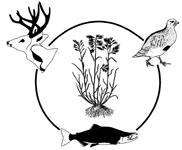Extension Wildlife & Fisheries Specialists Conferences

Triennial National Wildlife and Fisheries Extension Specialists Conference: 8th (1996)
Date of this Version
June 1996
Document Type
Article
Abstract
A need for external incentives for private landowners to manage their lands for wildlife was identified and has been discussed for many years. As early as 1930, the Committee on Game Policy (Leopold Committee) stressed that incentives for private landowners were crucial to achieving public objectives in wildlife management on private land. Various forms of subsidies, regulations, and taxes have been proposed, tried, modified, perpetuated, or discarded. Incentives or disincentives commonly were directed to specific practices which impact wildlife.
Wildlife in Texas are dependent upon private lands for their existence. Over 90% of the land is privately owned and managed on the basis of individual landowners' goals. Agriculture, including timber production, is the prevailing use. So, many incentive programs directed to agriculture impact wildlife.


Comments
Published in W. Daniel Edge, ed. Proceedings of the 8th National Extension Wildlife and Fisheries Specialists Workshop: Educational Challenges for the 21st Century. [1996] Corvallis, Oregon: Oregon State University, 1998.